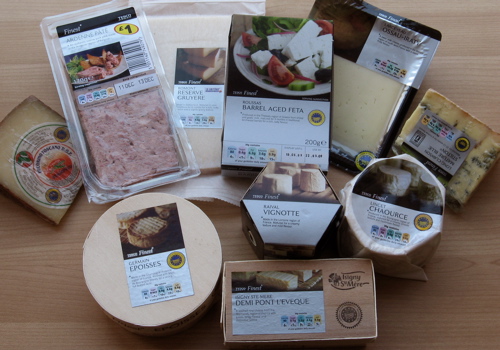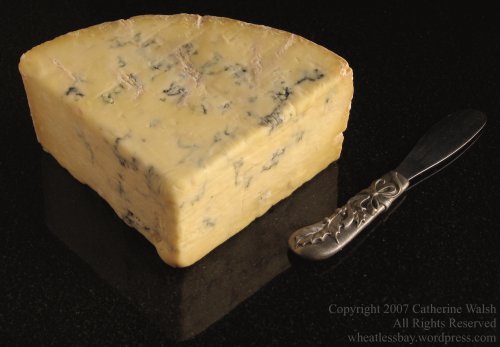Without easy access to a good fromagerie, one may still buy young cheese at a grocery store and ripen it at home in hopes of making it a bit more interesting. Large grocery stores will sometimes carry decent cheese that is young (and hence has shelf-life) but will be more flavourful closer to it’s best-before date. Along the lines of last year’s cheese post, we’ve stocked up for Christmas in mid-November at our local superstore (anyone from the UK will recognize these generic labels). By wrapping our cheese in greaseproof paper and hiding it in the lettuce crisper of the fridge for weeks, we hope to improve the hand we’ve been dealt. Most of these cheeses have some sort of official seal, such as DOP, AOC or PDO, which guarantee that they come from a particular region and are made in a particular way. It does not guarantee that they are good, or that we will like them, but in our experience a regional protection symbol greatly increases the odds.
I’m presently ripening the four whole cheeses in the front row of the photograph, and they all just happen to be French. Take note of the word ‘whole’: in my experience home-aging works most effectively for small whole, soft cheeses. I’ve had no luck at all ripening cheese that has been cut (is that possible? impossible?). So, starting from left to right in the front row, epoisses is an unpasteurized cow’s milk cheese from Burgundy, full fat with a rind washed in a spirits, and when ready it will smell like a horse’s arse. The pont l’eveque is a beefy-tasting brine-rubbed cheese from Normandy, politely sold in demi size. The vignotte is a pasteurized triple-cream from Champagne with no name-control; in other words it’s what passes for brie in many countries. The chaource is also from Champagne, and also similar to brie with a bloomy rind, but expected to march past the vignotte by virtue of being unpasteurized. Are these specimens going to be any good?: only time will tell. Are my cheeses from great ‘farmhouse’ producers? I doubt it, but I won’t be jetting off to Paris this December, so Tesco Finest™ will have to do. (Speaking of Tesco, the Ardenne Pate shown is gluten-free (and a £1!).) All these cheese will be improved by their native beverages: white burgundy, good apple cider, and of course champagne, repsectively.
Otherwise-pictured treats are a DOP pecorino tuscano, the aforementioned pork pate, an AOC gruyere, a PDO greek feta, an AOC issau-oraty, and finally a PDO british blue stilton from the Long Clawson Dairy, which is brilliant, and inexpensive domestically. Admittedly, not all these things will see December. Besides ripening some softer cheeses, another tip is that if you live far from cheese production is to consider harder cheeses that are designed to travel better, and are often raw-milk cheeses (once a cheese is aged long enough the FDA doesn’t care about the original milk). I’m enjoying a Swiss Sbrinz this week, a nutty two year-old, something like grano padano only creamier with and a hint of butterscotch. If Heidi can safely carry it up the mountain, an exporter can safely carry it to my cheese aisle.












